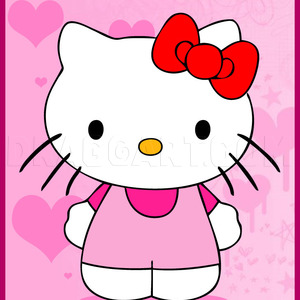1
Let's begin the guide drawing with a round shape for the head with a flat edge on the front. Another round shape will be the body.
2
The oval overlapping the body is the hip and upper leg. Beneath that, the triangle shape acts as the foot and lower leg. Back up at the head, draw a curve for the front of the neck, and a diagonal line at a sharp angle for the back of the neck.
4
The ovals on the body are the shoulder blades. From there we can draw stick arms bent in an L shape. Draw a circle for each hand, and add an S-curve for the tail.
5
Just to tighten things up a bit, let's complete the back edge of the arms and add some claws. A zigzag works for the mouth.
6
At this point, you have the option of adding some armor to the drawing. If you want to do that, I suggest skipping to Step 19. Once the armor is complete, you can return to this step and draw the raptor details around the armor. For those sticking wi
7
Draw an S-curve for the lower eyelid. Above the eye, draw one back-and-forth curve, like an upside-down V. Behind that, tiny curves copy a portion of that first shape and create a scale ridge around the eye socket. We can start outlining the top of t
8
For this raptor, let's draw a V curve to give him a beak for the front of his nose and mouth. From the tip of the beak, draw a curvy center line over the back of the head. Next we can add detail to the zigzag of the mouth, drawing sharp teeth going i
9
Next draw the lower jaw, with a point at the chin. Another point can be drawn for the cheekbone. Beneath the jaw, we can reinforce the V shapes of the inner neck.
10
Draw overlapping curves from the back of the head to build the rest of the neck. Use large curves for the outline of the shoulder blade and shoulder. Leave part of the shoulder blade area open, so it looks like part of the rest of the body. Finally,
13
One final curve completes the neck, as we transition to the back of the body. Break up this curve a bit, but pick it up again to draw the center ridge of the tail. Below, we'll use open curves to outline the hip, thigh and knee.
14
Close in the back of the body. Add a large wrinkle in the skin above the hip. Then we can start working on the lower leg. Below the knee, the leg starts to move away from us. At the next joint, the lower leg bends forward again. The entire leg from t
15
The center toe has a large, retractable claw. Because of its side, this toe is bent backward and the overall shape is like an S. From this angle, we can see the side and bottom of the claw and toe.
16
The outer toes have a round pad, and the claw comes out from on top of that. On the top of the foot and lower leg, draw a series of horizontal bars for scaly armor plates. For the opposite leg, let's draw a simplified shape. We don't want too many de
17
Draw more fleshy wrinkles on the back of the hip. Next use overlapping C-curves to build the bottom of the tail as it curves around. On the opposite side, one S-curve helps to show the bend of the tail. From there, smaller and smaller C-curves can be
18
Here's the finished line art for the Pet Raptor. Pretty cute, right? Don't go away, though. There's more!
19
If you wish, we can add some armor to this guy. Lighten up your drawing or use a tracing paper or vellum overlay. We'll draw simple shapes for arm guards and armor plates on the hips. The helmet will be a bit more complex. First draw a line from the
20
On the head, close in the eyebrow shape, making it very rectangular. Draw two curves below the eye. From there, we're mostly outlining the head again, but with simpler, smoother curve this time for a man-made feel. The armor plates on the back and ta
22
Next we'll add some jagged shapes for feathers. The shapes are mainly diamonds and triangles, with little V notches cut out of the sides.
23
Add some more large feathers behind the first ones, and then use thin curves to add detail and texture.
Comments 0
Details
May 21, 2014
Description: For this tutorial we'll be drawing a young raptor both with and without armor.


























































































